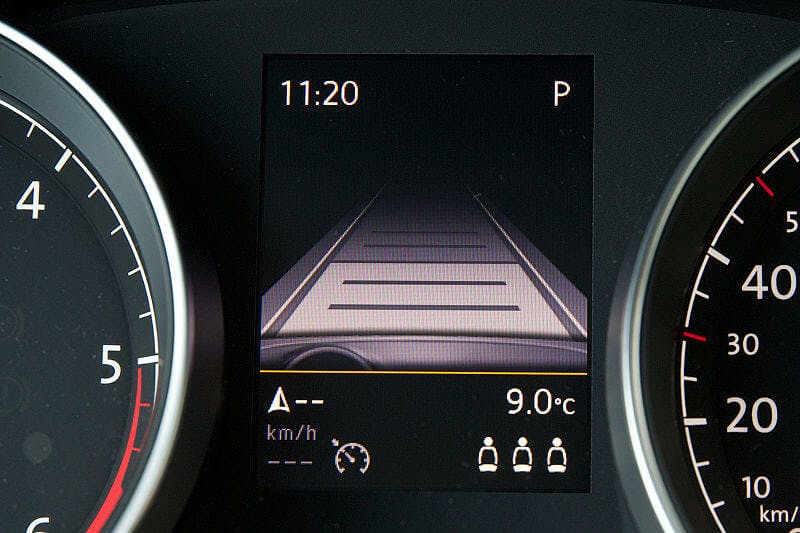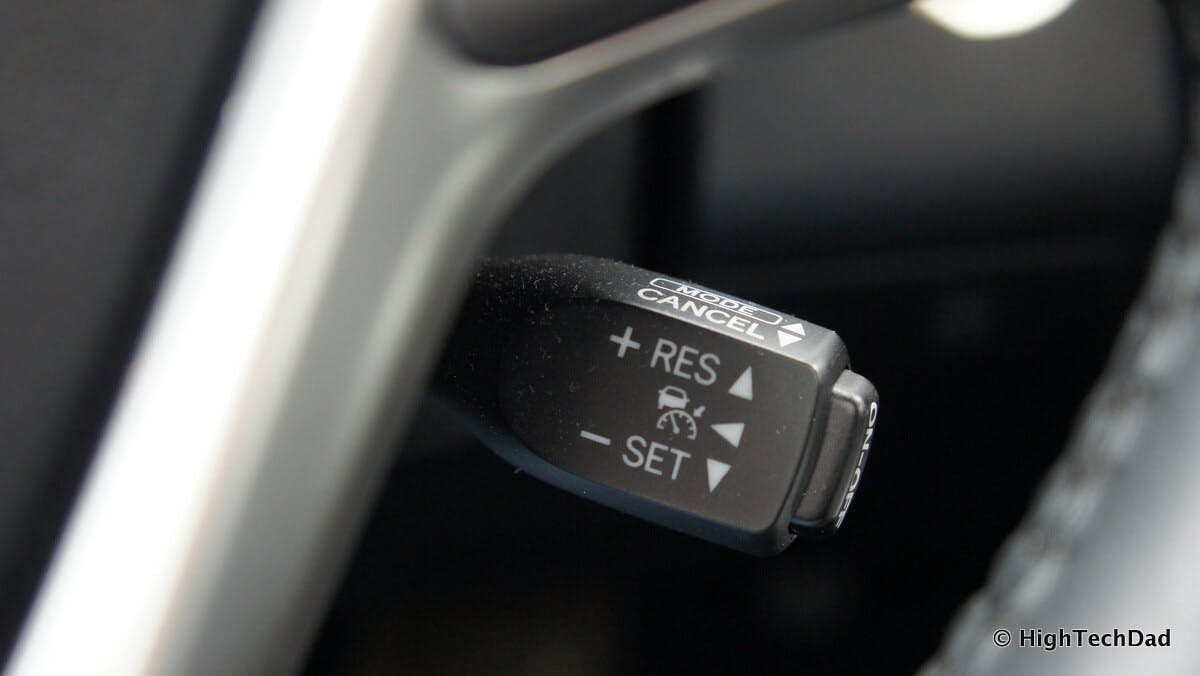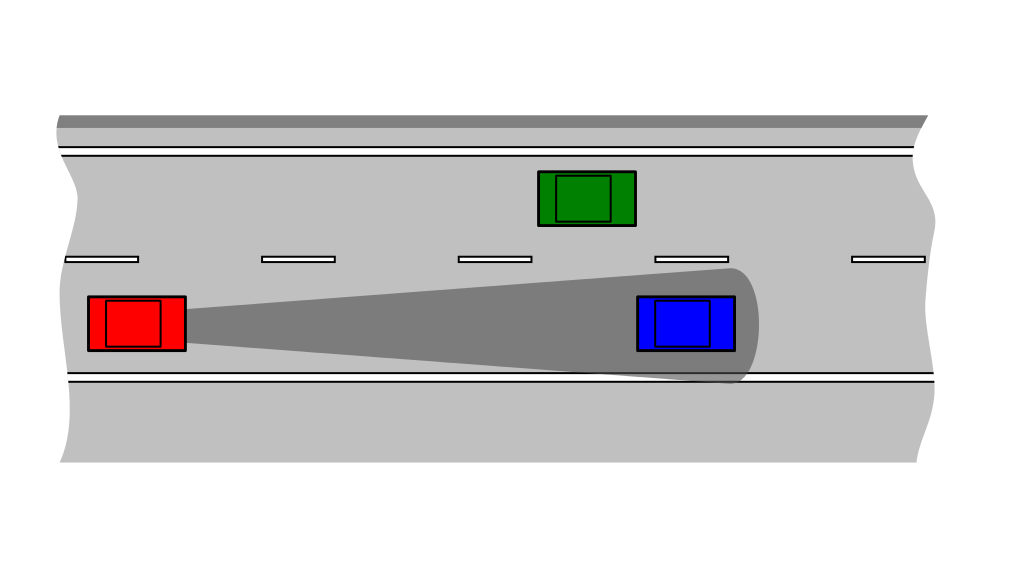Adaptive cruise control: How does it work?

Adaptive cruise control (ACC) is an advanced driver assistance system that maintains a consistent speed and distance between your vehicle and the one in front of it.
ACC monitors what is happening in front of the vehicle and maintains a safe distance from other vehicles to ensure a safe and comfortable driving experience.
Inhoudsopgave
- How Adaptive Cruise Control Works
- Types of Adaptive Cruise Control Systems
- Adaptive Cruise Control Distance Maintenance Programs
- Benefits of Adaptive Cruise Control
- Limitations and Drawbacks of Adaptive Cruise Control
- Adaptive Cruise Control and Autonomous Vehicles
- Interesting Facts About Adaptive Cruise Control
- Frequently Asked Questions About ACC
- Conclusion
How Adaptive Cruise Control Works
Adaptive cruise control is an improvement of the classic cruise control, which only maintains a constant (selected) speed of the car. In addition to this function, the ACC uses sensors, cameras, and radar to gather data about the surrounding environment.

Cruise Control: How it works and its benefits
It monitors what is happening in front of the vehicle. ACC will automatically accelerate or decelerate when necessary to maintain the set gap, allowing drivers to focus more on steering and situational awareness.
The speed of the car is reduced by braking or by controlling the fuel supply through the engine control unit, depending on what is happening in front of the car. If there is no other vehicle in front of the car, the adaptive cruise control automatically accelerates to the original (set) speed.
Adaptive cruise control works using microwave or laser radar, on the basis of which the system evaluates approaching obstacles (slower-moving vehicles) and is able to reduce the car's speed automatically and without the driver's intervention.

Types of Adaptive Cruise Control Systems
There are two main types of adaptive cruise control systems:
Full-Speed Range Adaptive Cruise Control: This system works at all speeds, including stop-and-go traffic. It can bring the vehicle to a complete stop and resume acceleration when traffic moves again, providing maximum convenience in heavy traffic conditions.
Partial-Speed Range Adaptive Cruise Control: This system is designed to operate within a specific speed range, typically above 35-40 kph (20-25 mph). It is less suitable for stop-and-go traffic and may require manual intervention when speeds drop below the minimum threshold.
Adaptive Cruise Control Distance Maintenance Programs
In addition, the driver can choose from four distance-keeping programs. In the sports program, ACC maintains only a small distance from the vehicle in front and dynamically accelerates to the set speed as soon as the road becomes clear.
Other programs allow smooth driving in convoys, through districts, or even with a trailer. Suppose adaptive cruise control evaluates that the car is approaching an obstacle too quickly. In that case, the system warns the driver, prepares the braking system for sudden braking, and automatically starts to reduce speed.
Benefits of Adaptive Cruise Control
Safety: ACC can help reduce the risk of collisions by maintaining a safe distance from the vehicle in front. It can automatically react to changes in traffic conditions more quickly than a human driver.
Comfort: ACC reduces driver fatigue by managing speed adjustments, making long drives and heavy traffic more manageable.
Fuel Efficiency: Adaptive cruise control can contribute to better fuel efficiency and lower emissions by maintaining consistent speeds and avoiding unnecessary acceleration.
Convenience: ACC allows drivers to focus on other aspects of driving, such as steering and navigation, enhancing the overall driving experience.
Limitations and Drawbacks of Adaptive Cruise Control
Even with the adaptive cruise control, the car driver must stay focused. ACC does not react to standing obstacles or oncoming vehicles and may not even recognize motorcycles or vehicles traveling at very low speeds.
The following are the limitations and drawbacks of adaptive cruise control:
Adverse Weather Conditions: ACC systems can be affected by heavy rain, snow, or fog, which may limit their functionality and effectiveness.
Limited Responsiveness: ACC is not designed to react to all situations, such as sudden lane changes, pedestrians, or stationary objects.
False Alarms: ACC systems sometimes misinterpret sensor data, causing unnecessary braking or acceleration.
Overreliance: Drivers may become too reliant on ACC, leading to reduced attention and slower reactions to unexpected events.
Adaptive Cruise Control and Autonomous Vehicles
Adaptive cruise control is a stepping stone toward fully autonomous vehicles. As technology continues to advance, ACC systems are being integrated with other driver assistance features, such as lane-keeping assist and collision avoidance systems, to create more sophisticated semi-autonomous driving experiences.
In the future, ACC and other advanced driver assistance systems will likely play a significant role in the development of fully autonomous vehicles, providing greater safety, efficiency, and convenience on our roads.
Interesting Facts About Adaptive Cruise Control
Early Beginnings: The concept of adaptive cruise control dates back to the late 1950s when RCA Labs developed a prototype system using electronics and radar technology. However, it wasn't until the 1990s that the first commercial ACC systems became available.
Radar Technology: Most ACC systems rely on radar technology to determine the distance and speed of the vehicle in front. Modern systems also use cameras and LIDAR sensors for more accurate detection and responsiveness.
Stop-and-Go Functionality: Some advanced ACC systems have stop-and-go functionality, allowing the vehicle to come to a complete stop and resume following the vehicle ahead when traffic starts moving again.
ACC in Semi-Trucks: Adaptive cruise control is not limited to passenger vehicles. Many commercial truck manufacturers now offer ACC systems to help drivers maintain a safe following distance, reduce fatigue, and improve fuel efficiency.
Frequently Asked Questions About ACC
Q: Can I use adaptive cruise control in all driving conditions?
A: While ACC is designed to work in various driving conditions, its performance may be affected by heavy rain, snow, or fog. In these situations, it's essential to remain vigilant and ready to take control of the vehicle if necessary.
Q: Is adaptive cruise control suitable for use on city streets?
A: Adaptive cruise control is primarily designed for highway driving, where traffic patterns are more predictable. Using ACC on city streets may not be as effective due to frequent stops, variable speeds, and the presence of pedestrians and cyclists.
Q: Can I retrofit my current vehicle with adaptive cruise control?
A: Retrofitting adaptive cruise control to an existing vehicle is generally not recommended, as it requires extensive modifications to the vehicle's electronics, sensors, and software. It is more practical to purchase a vehicle equipped with ACC from the factory.
Q: Does adaptive cruise control replace the need for a driver?
A: No, ACC is an advanced driver assistance system designed to support the driver, not replace them. Drivers must remain attentive and ready to take control of the vehicle at all times, as ACC cannot handle all driving situations or react to unexpected events.
Q: Can I disengage adaptive cruise control if I prefer not to use it?
A: Adaptive cruise control can be easily disengaged if you prefer not to use it. In most vehicles, pressing the brake pedal or turning off the cruise control function will deactivate the ACC system.
Conclusion
Adaptive Cruise Control is an advanced driver assistance system that enhances road safety, comfort, and efficiency. As autonomous vehicle technology continues to evolve, ACC and other advanced driver assistance systems will play a crucial role in shaping the future of transportation.